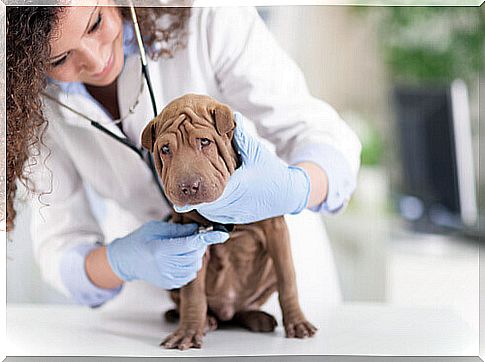How Is It Possible To Know That Something Is Not Right With Your Dog

Even if you think you know your pet very well and you immediately know what its body language means, sometimes it’s not so easy to tell if it has a physical problem, or even an emotional one. That’s when you wonder how you can know with absolute certainty that something is wrong with your dog. We tell you some things that you should take into consideration to be able to detect if something is not going well with your pet.
dogs and pain

Author: LuAnn Snowder Photography
It turns out that, for example, our four-legged friends do not so openly express that they feel pain as in our case. There are several reasons for this:
- They cannot speak our language to tell us in more or less detail what is happening to them.
- They have greater resistance to pain than humans.
- They don’t manifest pain for the sake of survival, something they inherited from their ancestors.
Signs that indicate something is not right with your dog
But, in general, if something goes wrong with your dog, you will notice a change in behavior, or that he fails to perform some of the usual behaviors.
Pay attention to:
- Excessive vocalizations: moans, howls, grunts and even barks. If your dog is more expressive verbally, you’d better stay on alert.
- A constant cleanliness in a certain part of the body. Even if your pet doesn’t have a visible wound, your pet is most likely wanting to alleviate an internal pain by persistently licking the pain.
- If the animal sleeps longer than usual. If a dog is not feeling well, it is very likely that he will spend more hours resting. Maybe you do this to try to heal yourself or because it’s hard for him to move around a lot.
More signs that your pet is not feeling well
Although they seem obvious, it is not too much to remember these signs that, for sure, indicate that your pet has a health problem:
- You don’t feel like eating.
- Drink too much water or stop drinking it.
- Breathes in an altered way, despite not having done any excessive physical activity.
- You don’t want to play or walk around.
- It has difficulty lying down, sitting down, getting up or moving around.
- It gets restless.
- Adopts unusual behaviors.
- Hide or isolate yourself.
- You are more pampered than usual.
- Expresses irritation and even has aggressive attitudes.
- It presents changes in the amount and appearance of urine and feces.
- Vomits constantly.
- It’s limping.
Less obvious signs that your pet has a physical or emotional problem
It is also possible that certain diseases do not manifest themselves until they are well advanced or that their signs are not fully evident.
Please note that:
- When a dog has its eyes often squinted and its pupils shrink, it is likely to be suffering from eye pain.
- Dilated pupils are often also a sign of pain in any part of the body.
- The nodules he may have are usually of different origins and are either benign or malignant. They are often not completely visible and need not necessarily be painful. So it’s good that you do an exhaustive search to find them.
- The ear infections are difficult to detect. Pay attention that your puppy does not persistently nod his head.
- White gums usually indicate anemia.
Also, if your pet gives off a strange or unpleasant odor from any part of its body, it is very likely that something is not quite right with its health.
Be sure to take your pet to the vet

If suspicions that something is wrong with your dog become more and more concrete, try to detect where the animal feels the pain. Carefully feel his entire body, as the pain can provoke an aggressive reaction by the animals.
Consider that perhaps changes in your dog’s behavior or habits are not a physical issue. Don’t rule out that he may be experiencing stress or that he is feeling scared for some specific reason.
Anyway, what you have to do is go to the vet without wasting time. The idea is that you can quickly diagnose what happens to your pet and give it the most appropriate treatment.








